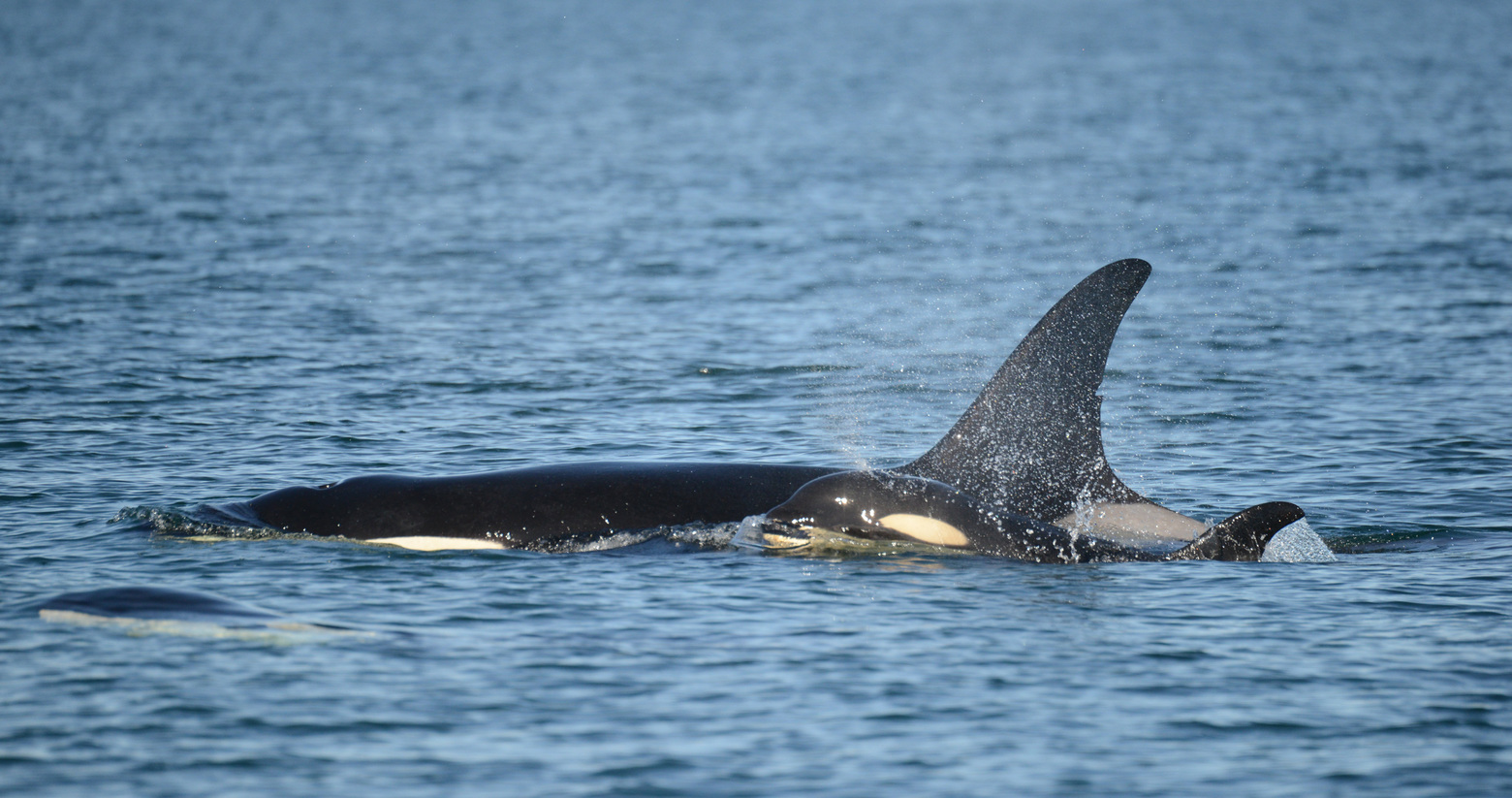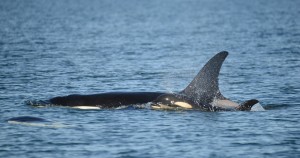One of the most easily recognized of Puget Sound’s resident killer whales has died, and her young calf will almost certainly follow — despite his older sister’s attempts to save him, biologists reported Friday.
Photographs and observer reports over the past several weeks revealed the sad drama that has played out among members of J-pod, one of the southern resident orca groups whose range includes Washington’s inland marine waters.
The death of the calf would bring the endangered southern orca population to 80, on a par with the lowest levels in decades, said Ken Balcomb, director of the Center for Whale Research on San Juan Island.
“We have seen virtually no growth in this population in 20 years despite large amounts of money spent to study and recover them,” Balcomb wrote in an “obituary” for the two animals.
The mother whale, known as J28, was about 24 years old and in what should have been her prime breeding years. She was well-known to whale watchers because of a distinctive nick on the trailing edge of her dorsal fin.
The whale’s health began to decline several months ago, Balcomb wrote. She grew progressively emaciated until she disappeared from her family group around Oct. 19. Her carcass has not been found, but biologists say she probably died in the Strait of Juan de Fuca earlier that week.
The mother’s death essentially doomed her 10-month-old calf, who was still nursing, said Howard Garrett, of the monitoring program called Orca Network.
Nevertheless, female relatives mounted a “heroic effort” to care for the youngster, Garrett said.
The calf’s 7-year-old sister was frequently seen offering salmon to her little brother and ailing mother, but was unable to provide enough food to sustain them, Balcomb pointed out.
Photos showed the sister and an aunt attempting to support the young whale and keep him on the surface. Scoring and scratches on his skin, revealed in close-up shots, are probably the results of those efforts, as the other whales used their mouths to grasp the calf, Garrett said.
By the time his mother disappeared, the calf was already malnourished. “She probably wasn’t providing enough milk for quite a while,” Garrett said. “He really didn’t stand a chance.”
One of the most recent photos shows two females bracketing the calf’s limp body, suggesting he may have already died.
The southern resident whales, who range through Puget Sound, the Strait of Juan de Fuca and around the San Juan Islands, were listed as endangered in 2005, after their population dropped steeply from about 100 animals in the late 1990s to 80 in 2001.
Numbers rose slightly since then, but dropped back to 80 in 2014.
The birth of nine calves between December 2014 and January 2016 raised hopes that the population was on the upswing. But three of those young whales have died, including J28’s calf. Three adults also died earlier this year, including one who was likely killed by an infection from an unsterilized research tag.
Mortality is always high for young killer whales, but Balcomb blames much of the population’s overall decline on a reduction in the resident whales’ main prey — chinook salmon. The marine mammals also carry a heavy burden of toxic chemicals, including residues of pesticides, flame retardants and industrial solvents, concentrated in their tissues.
A healthy population of whales would be producing five to 10 calves that live past infancy every year, Balcomb pointed out.
Several of the southern resident family groups are also on the verge of dying out, because they include no females of reproductive age, he added.
Brad Hanson, a marine mammal expert for the Northwest Fisheries Science Center in Seattle, said none of the other animals in J28’s pod, except for her calf, appeared emaciated. So it’s possible she had an underlying medical problem that contributed to her death.
Federal biologists are reviewing the status of the southern residents, which are not meeting recovery goals. That includes continued monitoring by Hanson and his colleagues, to learn more about the animals’ diets.
“We know chinook is important, but they do eat other things,” he said.
A 2014 special report by the National Oceanic and Atmospheric Administration on threats facing Washington’s orcas pointed to declines in salmon, vessel noise and traffic, and chemical contamination.
Whale advocates are pushing for removal or breaching of four dams on the lower Snake River, to boost struggling salmon populations. In May, a federal judge blasted government agencies for failing to consider dam removal as a way to improve salmon runs. He sent the agencies back to the drawing board, with a March 1, 2018, deadline for a new approach.








